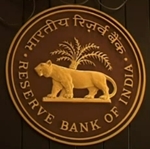Tight-knit banking system could lead to total collapse, warns RBI
30 Dec 2014
 The close ties between India's banks and other lenders could lead to a cascading effect in case of trouble at a single institution, the Reserve Bank of India warned on Monday.
The close ties between India's banks and other lenders could lead to a cascading effect in case of trouble at a single institution, the Reserve Bank of India warned on Monday.
This so-called shadow banking system is worth $190 billion in India, ranking it third largest among BRICS countries and 15th in the world, it said.
Trouble at a single bank among the top five most-connected lenders in India could lead to contagion that could wipe out nearly 50 per cent of Tier I capital in the banking system under a severe stress scenario, the RBI said in its semi-annual Financial Stability report.
"This underscores the importance of monitoring not just interconnectedness, but also the counterparties and magnitude of exposure involved in the connection," the central bank said.
The report did not identify the top five banks used for its study. It said its stress tests involved conditions such as potential failure of a bank that is either a net lender, or a net borrower, or both.
The RBI also used money markets as one of its variables for stress tests, given that banks frequently lend to each other in short-term maturities.
India's non-banking financial companies (NBFCs) also pose a risk to the banking system due to their close ties with banks, the RBI warned in its report.
Turning to other risks in India's financial system, the RBI highlighted the need for "closer examination" of the practice of promoters who pledge a substantial portion of company shares to get loans.
Still, overall, the RBI expected the level of bad loans to steadily go down, estimating that the ratio of gross non-performing loans to total assets would decline to 4 per cent by March 2016 from 4.5 per cent at the end of September 2014 under its baseline scenario.
But under its "severe stress" scenario that ratio would rise to around 6.3 per cent by March 2016, the RBI said.
Price rise to be around 6%
Turning to economic indicators, the RBI said it expects consumer price inflation to hover around 6 per cent in the next 12 months if global crude prices remained steady and monsoons normal.
The RBI has a target of bringing consumer inflation down to 6 per cent by March 2015.
The central bank also expects India's economy to grow 5.5 per cent in the fiscal year ending March and then slowly pick up momentum in the following year.













.jpg)






.jpg)









